Follow the Stages of the Monarch Butterfly Life Cycle
Updated: Aug. 04, 2021
You've probably seen monarch butterflies, and maybe monarch caterpillars, but there's a lot to learn about the monarch life cycle.
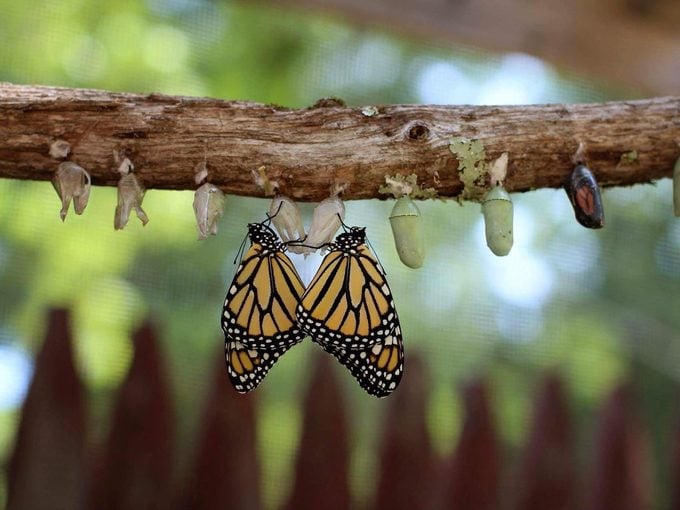
The monarch butterfly life cycle begins with a whirl of wings in the heat of the summer sun. As a female monarch sips nectar from a wildflower, a male hovers nearby. A pheromone is released from tiny black scent glands on his lower wings in hopes that she will accept his advances. He lingers until she perches on a leaf, a clear invitation. The two butterflies join together at the tips of their abdomens and stay that way for several hours until he is certain that no other male monarch will take his place. Several days later, the female is ready to lay eggs.
Monarch Life Cycle Stages
- Egg
- Larva (caterpillar)
- Pupa (chrysalis)
- Adult butterfly
Discover 7 fascinating monarch butterfly facts.
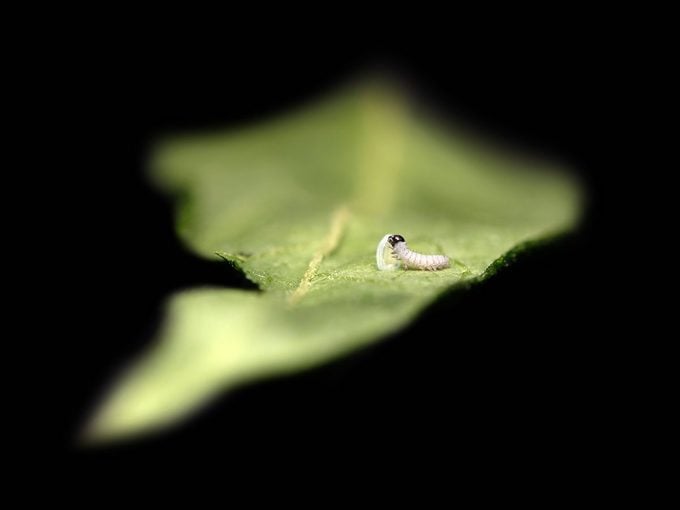
Milkweed leaves are the only things her future offspring will eat. She flits from leaf to leaf and uses special glands on her feet to “taste” each plant until she finds milkweed. Once she finds it, she lays eggs one at a time on the newest growth. Over the course of a week, the female lays several hundred white eggs, no bigger than a pinhead, on any milkweed leaf she finds.
Check out the ultimate guide to growing milkweed plants for monarchs.
Monarch Caterpillar
Four days later a minuscule caterpillar, also called the larva, emerges, already voraciously hungry. Its first meal is its own eggshell, and then it moves on to munch the milkweed leaves. The caterpillars exclusively eat milkweed. Try showy, common or swamp milkweed and butterfly weed.
Soon it outgrows its skin, which stretches but does not change size. The skin splits open and the caterpillar wiggles out, revealing new skin beneath. Over the next two weeks, it molts four times and becomes nearly 3 inches long.
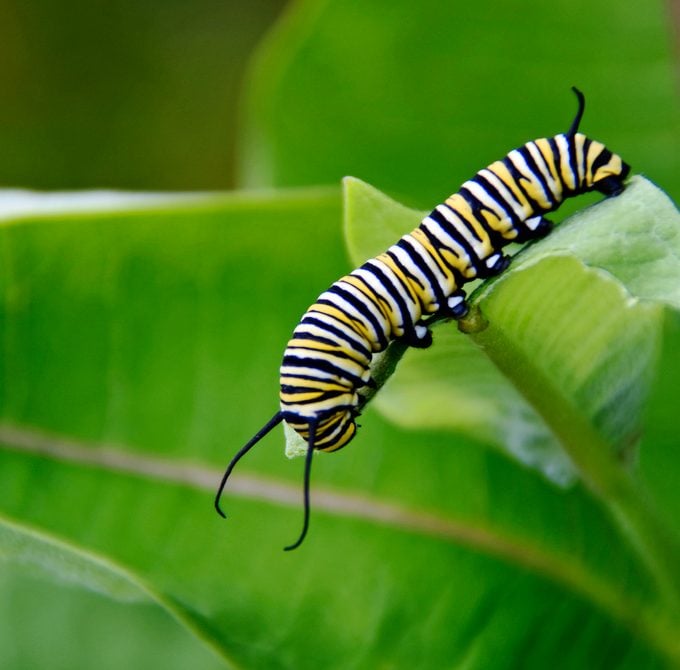
Monarch caterpillars have distinctive white, yellow and black bands. One set of long, black filaments at either end are also a telling field mark.
Quiz: How many types of caterpillars can you identify?
Larva or Caterpillar?
Larva is the juvenile form of all insects that undergo a metamorphosis. Only butterflies, like these monarchs, and moths are called caterpillars during their larval stage.
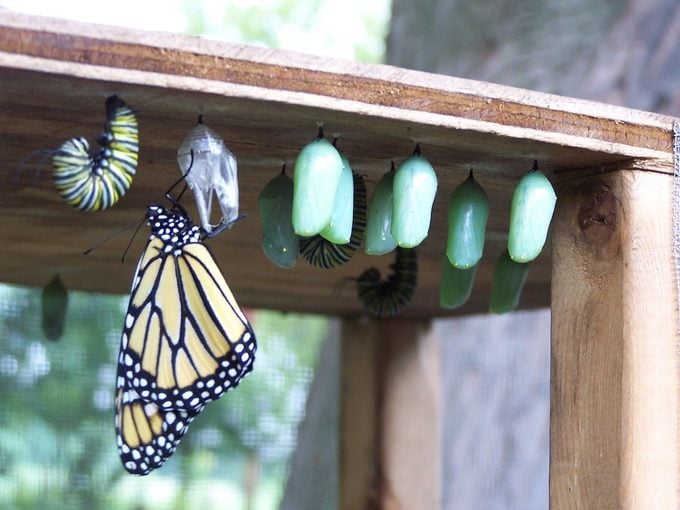
Monarch Chrysalis
The caterpillar crawls away from the milkweed plant in search of a safe spot to begin the pupa stage of the monarch butterfly life cycle. It uses spinnerets near its mouth to create a tiny silken pad. Then it carefully hooks the tail end of its body into the pad and drops headfirst to hang in the shape of a “J.” A few hours later, the skin splits at the head one last time and falls away to reveal a green structure that hardens into a smooth, waxy shell flecked with gold. The making of the chrysalis is complete.
It takes 10 days to two weeks for a monarch to transform from a pupating caterpillar to an adult.
“I fell in love with monarchs when I found a chrysalis and watched this butterfly slowly emerge and fly away. The process made me think about the importance of learning to soar through changes,” says Carol Manglos-Foster of Onemo, Virginia.
Psst—monarch butterfly migration is simply magical. Use this monarch migration map to track the epic journey.
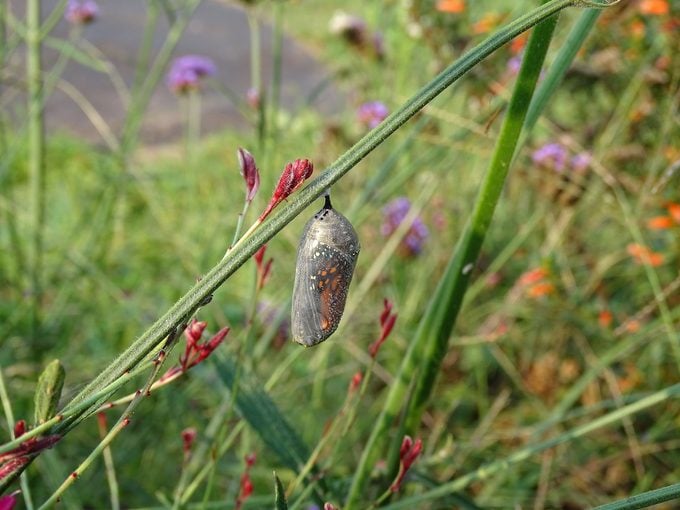
Adult Monarch Butterfly
Now the adult butterfly is nearly ready to emerge from the chrysalis. This is the last stage of the monarch butterfly life cycle. The outer skin thins and becomes transparent, exposing the colors of the wings and body that have formed inside. Next the chrysalis opens, and the butterfly crawls out headfirst. The wings are limp and its body is plump. It rests for a moment, then begins to pump fluid from its body into the wings. The wings expand and dry for a few hours, and then a breeze carries the butterfly off on its first flight.
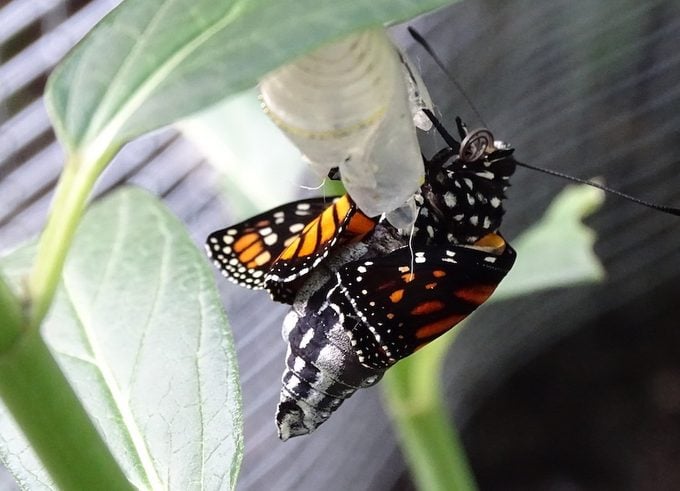
“The metamorphosis monarchs go through to become adults is amazing. They rely on milkweed for survival, and with habitat disappearing, it’s more important than ever for gardeners to plant plenty of it,” says Jenny Miner of Irma, Wisconsin.
Are monarch butterflies endangered?
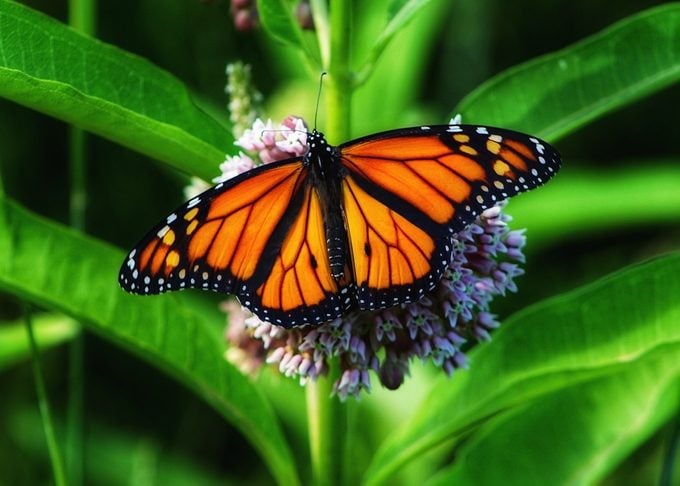
Attract More Monarchs
- Plant milkweed native to your area. Try growing several varieties. Ask your local extension office for their suggestions or learn more from the Xerces Society.
- Grow native, late-season nectar plants, such as goldenrod, aster and liatris, to provide migrating monarchs with the food they need.
- Avoid using pesticides, including any insecticidal soaps or oils.
- Add a shallow water source, flat warming stone and damp puddle for butterflies to lap up moisture and minerals. To create a damp puddle, fill a shallow container with sand. Sprinkle on a bit of sea salt or wood ash, and watch for the butterflies and bees to gather.
Next, check out the best monarch butterfly flowers you should grow.




















